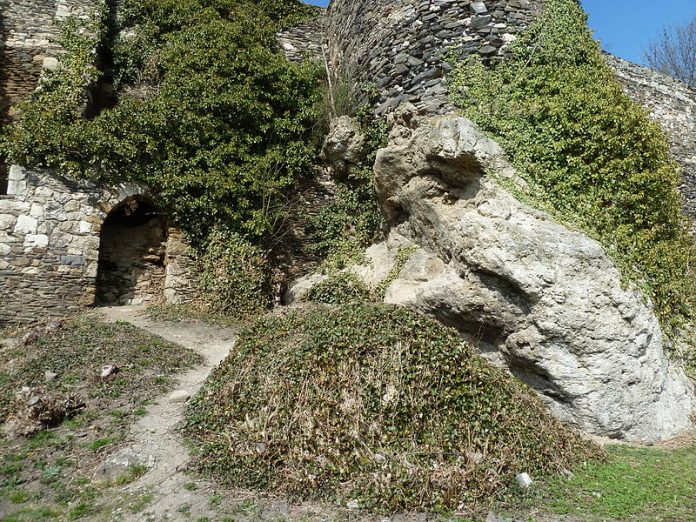ஹோமோ சேபியன்ஸ் அல்லது நவீன மனிதன் சுமார் 200,000 ஆண்டுகளுக்கு முன்பு கிழக்கு ஆப்பிரிக்காவில் நவீன எத்தியோப்பியாவிற்கு அருகில் உருவானான். அவர்கள் நீண்ட காலம் ஆப்பிரிக்காவில் வாழ்ந்தனர். சுமார் 55,000 ஆண்டுகளுக்கு முன்பு அவர்கள் யூரேசியா உட்பட உலகின் பல்வேறு பகுதிகளுக்குச் சிதறி, சரியான நேரத்தில் உலகில் ஆதிக்கம் செலுத்தினர்.
The oldest evidence of human existence in ஐரோப்பா இல் காணப்பட்டது பச்சோ கிரோ குகை, பல்கேரியா. இந்த இடத்தில் மனித எச்சம் 47,000 ஆண்டுகள் பழமையானது என்று குறிப்பிடப்பட்டுள்ளது எச். சேபியன்ஸ் தற்போது 47,000 ஆண்டுகளுக்கு முன்பு கிழக்கு ஐரோப்பாவை அடைந்தது.
யூரேசியா நியண்டர்டால்களின் நிலமாக இருந்தது (ஹோமோ நியாண்டர்தலென்சிஸ்), an extinct species of ancient humans who lived in ஐரோப்பா and Asia between 400,000 years before present to about 40,000 years before present. They were good tool maker and hunter. H. sapiens did not evolve from neanderthals. Instead, both were close relatives. As shown in fossil records, neanderthals differed markedly from Homo sapiens anatomically in the skull, ear bones and pelvis. The former were shorter in height, had stockier bodies and had heavy brows and big noses. Therefore, based on significant differences in physical traits, neanderthals and homo sapiens are traditionally considered to be two distinct species. Nevertheless, எச். நியண்டர்தாலென்சிஸ் மற்றும் எச். சேபியன்ஸ் interbred outside Africa when the later met neanderthals in Eurasia after leaving Africa. The present human populations whose ancestors had lived outside Africa have about 2% neanderthal DNA in their genome. Neanderthal ancestry is found in modern African populations as well perhaps because of migration of ஐரோப்பியர்கள் into Africa over the past 20,000 years.
The co-existence of neanderthals and H. sapiens in the ஐரோப்பா has been debated. Some thought that the neanderthals disappeared from northwestern ஐரோப்பா before the arrival of H. sapiens. Based on the study of stone tools and fragments of skeletal remains at the site, it was not possible to determine whether specific excavated levels at archaeological sites are associated with Neanderthals or H. sapiens. After reaching ஐரோப்பா, செய்தது எச். சேபியன்ஸ் நியண்டர்டால்கள் அழிவை எதிர்கொள்வதற்கு முன் (நியாண்டர்தால்கள்) இணைந்து வாழ்வா?
ஜேர்மனியின் ரனிஸில் உள்ள இல்சென்ஹோல் என்ற தொல்பொருள் தளத்தில் லிங்கம்பியன்-ரனிசியன்-ஜெர்ஸ்மானோவிசியன் (எல்ஆர்ஜே) கல்-கருவிகள் தொழில் ஒரு சுவாரஸ்யமான வழக்கு. இந்த தளம் நியண்டர்டால் அல்லது எச்.சேபியன்களுடன் தொடர்புடையதா என்பதை உறுதியாக நிரூபிக்க முடியவில்லை.
In studies published recently, researchers extracted the பண்டைய டிஎன்ஏ from the skeletal fragments from this site and upon mitochondrial DNA analysis and direct radiocarbon dating of the remains found that remains belonged to modern human population and were about 45,000 years old which makes it the earliest H. sapiens remains in Northern ஐரோப்பா.
The studies showed that Homo sapiens were present in central and northwestern ஐரோப்பா long before extinction of Neanderthals in southwestern ஐரோப்பா and indicated that both species coexisted in Europe during the transitional period for about 15,000 years. H. sapiens at LRJ were small pioneer groups who were connected to wider populations of H. sapiens in eastern and central Europe.It was also found that around 45,000-43,000 years ago, cold climate prevailed across the sites at Ilsenhöhle and had a cold steppe setting. Directly dated human bones at the site suggest that H. sapiens could use the site and operate thus showing ability to adapt to the prevailing severe cold conditions.
The studies are significant because it identifies an early spread of H. sapiens into cold steppes in northern ஐரோப்பா 45,000 years ago. The humans could adapt to the extreme cold conditions and operate as small mobile groups of pioneers.
***
குறிப்புகள்:
- மைலோபொடாமிடாகி, டி., வெயிஸ், எம்., ஃபியூலாஸ், எச். et al. ஹோமோ சேபியன்கள் 45,000 ஆண்டுகளுக்கு முன்பு ஐரோப்பாவின் உயர் அட்சரேகைகளை அடைந்தனர். இயற்கை 626, 341–346 (2024). https://doi.org/10.1038/s41586-023-06923-7
- பெடர்சானி, எஸ்., பிரிட்டன், கே., ட்ராஸ்ட், எம். மற்றும் பலர். நிலையான ஐசோடோப்புகள் ஹோமோ சேபியன்கள் ~45,000 ஆண்டுகளுக்கு முன்பு ஜேர்மனியின் ரானிஸில் உள்ள இல்சென்ஹோல் என்ற இடத்தில் குளிர்ந்த படிகளில் சிதறியதைக் காட்டுகின்றன. Nat Ecol Evol(2024). https://doi.org/10.1038/s41559-023-02318-z
- ஸ்மித், ஜிஎம், ரூபென்ஸ், கே., ஜவாலா, ஈஐ et al. ஜெர்மனியின் ரனிஸில் உள்ள இல்சென்ஹோலில் ~45,000 ஆண்டுகள் பழமையான ஹோமோ சேபியன்ஸின் சூழலியல், வாழ்வாதாரம் மற்றும் உணவுமுறை. Nat Ecol Evol (2024). https://doi.org/10.1038/s41559-023-02303-6
***






































